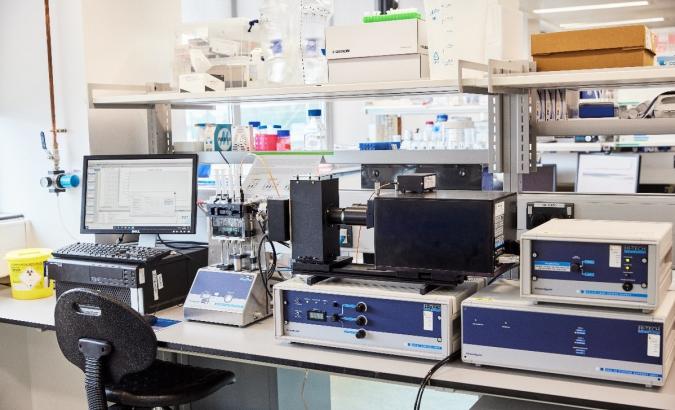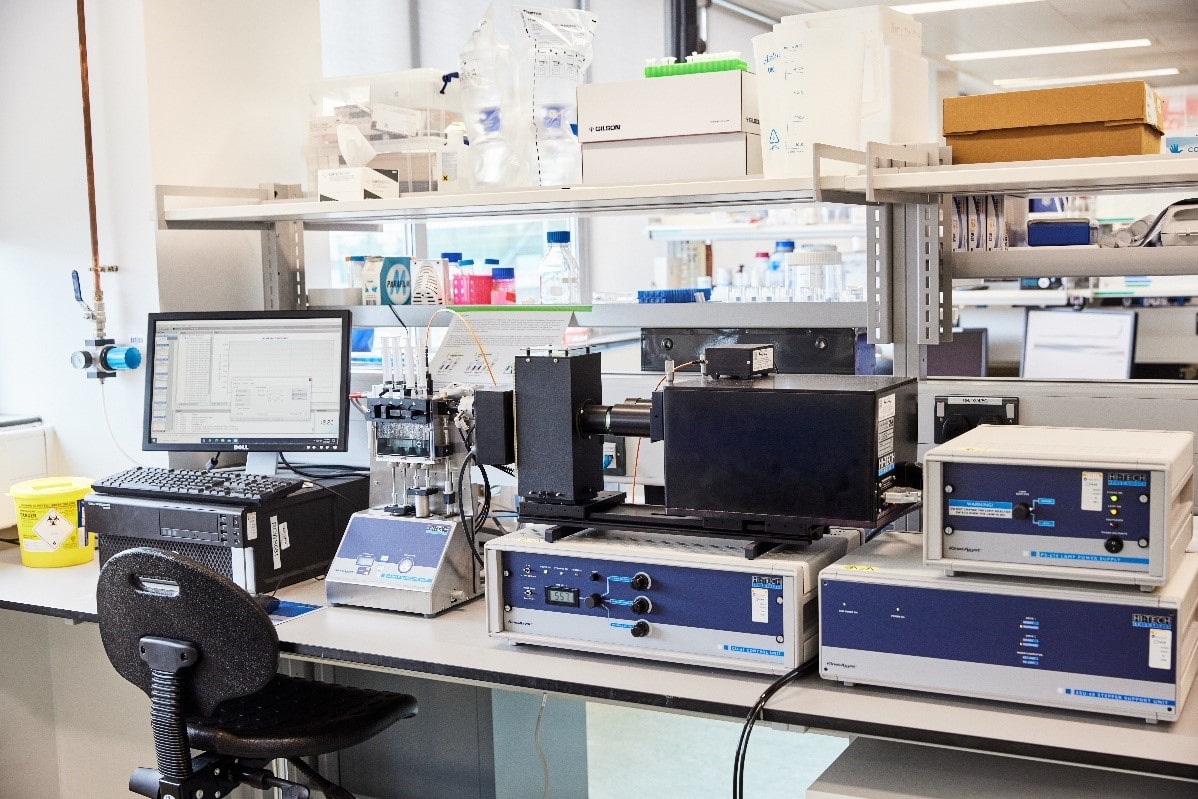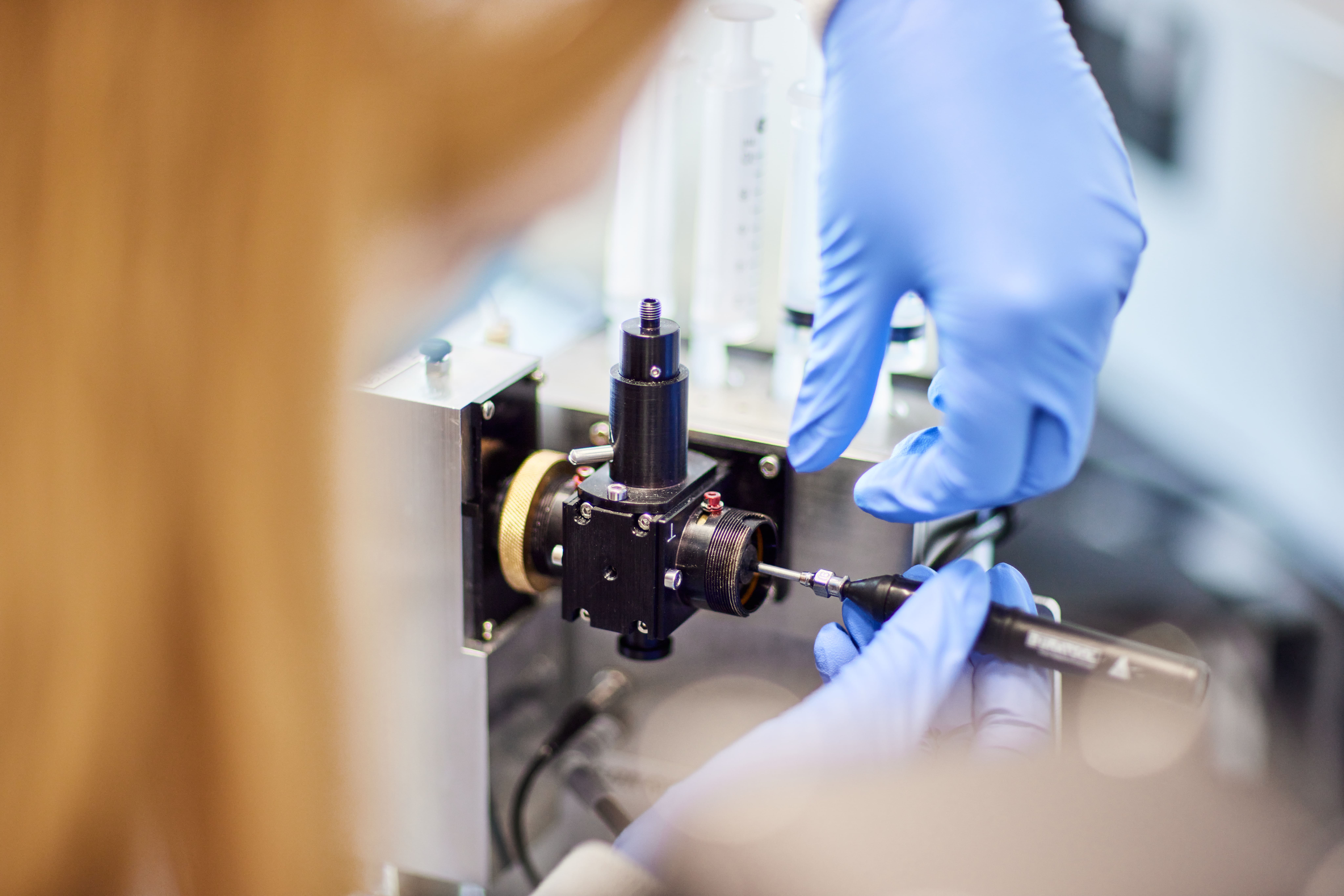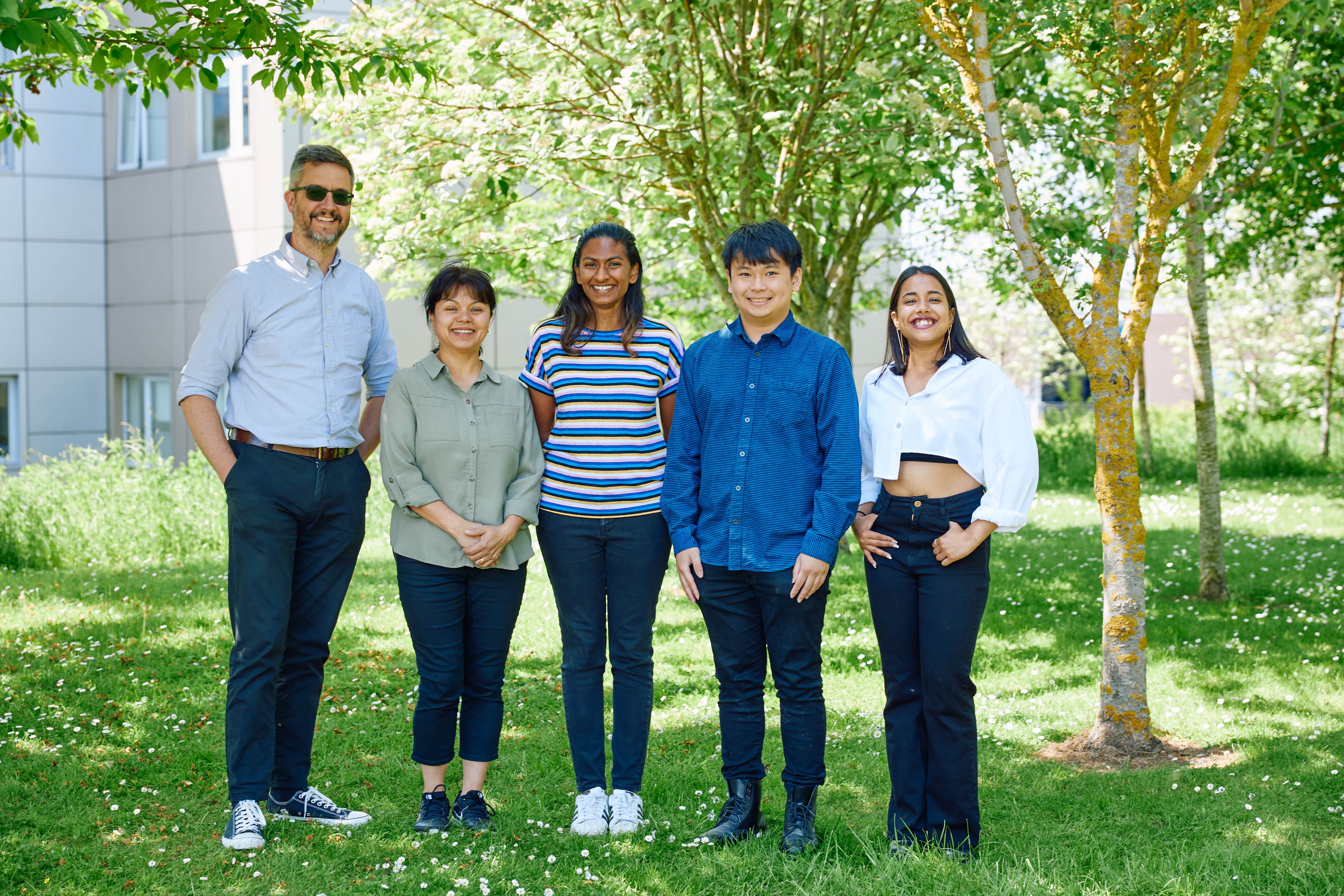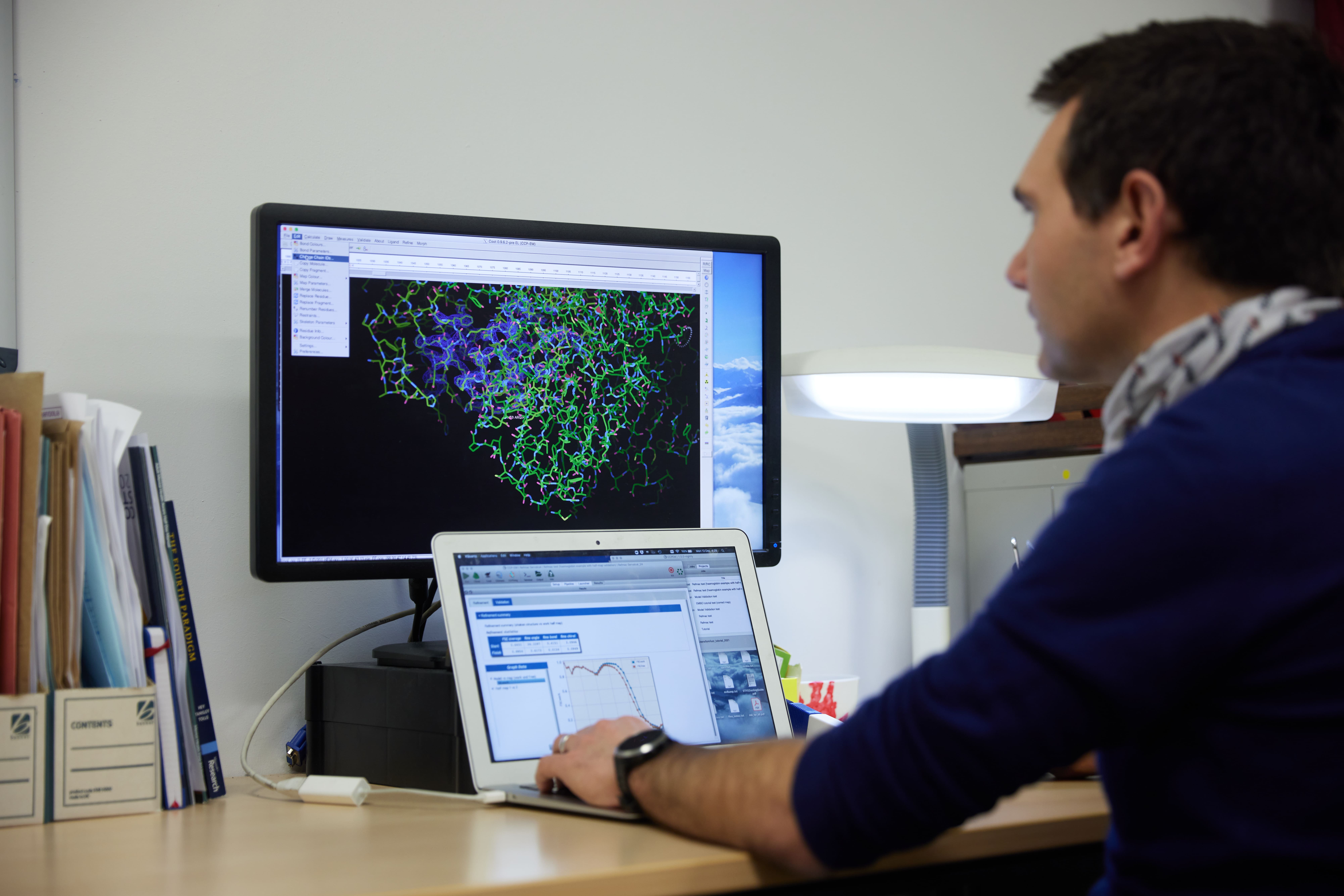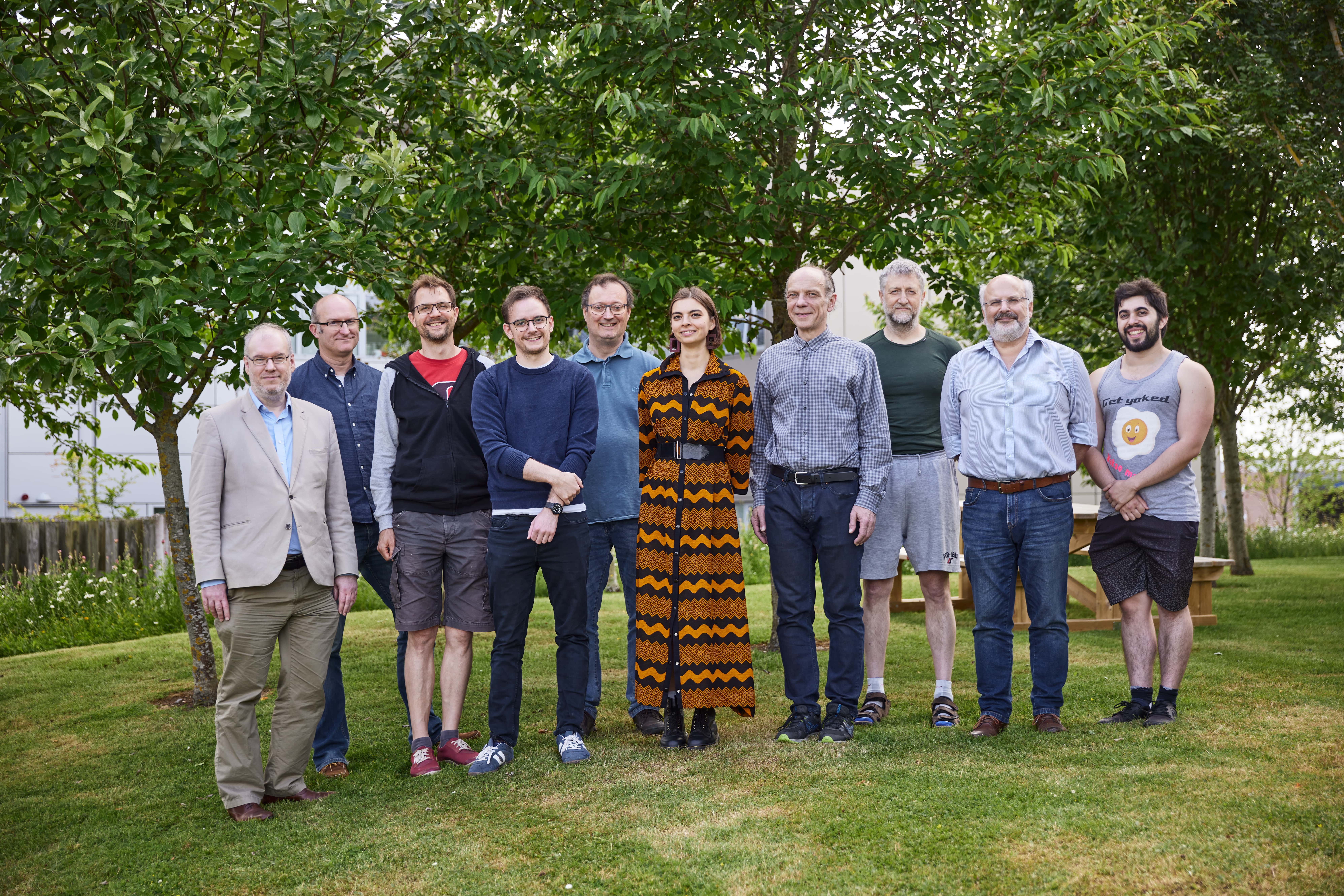Stopped-flow fluorimeter
In stopped-flow, small volumes of solutions are rapidly driven from syringes into a high efficiency mixer to initiate a fast reaction. The resultant reaction volume displaces the contents of an optical cell, thus filling it with freshly mixed reagents. The volume injected is limited by the stop syringe which provides the “stopped-flow”. Just prior to stopping, a steady state flow is achieved. The solution entering the flow cell is only milliseconds old. Using appropriate techniques, the kinetics of the reaction in the optical cell can be measured.
Research Complex has a TgK Scientific SF61DX2 stopped-flow system. The system can detect both absorbance and fluorescence signals, and has an optional scanning CCD detector for use in multi-wavelength experiments. It can also measure fluorescence anisotropy, which can be used to study the binding interaction between two molecules, and can be used to measure the binding constant for the interaction. The instrument can operate in single- or double-mixing mode, the latter enabling use of an optional quench-flow module that allows the user to isolate intermediates and products within a reaction mechanism and take them away to for analysis by other means. This is a complementary technique to stopped-flow and can be used when the reaction does not produce spectroscopic changes, or when spectroscopic changes cannot identify specific reaction components.
